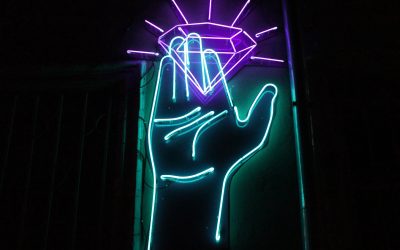Everyone has a great idea. Maybe you are a first time inventor who came up with an idea for a new and useful product, process or methodology. Maybe you are a seasoned business person, and you created a brand name. You have developed a successful market for your brand, and now you want to protect your brand name and logo. Maybe you are an entrepreneur, you are about to embark on a business venture, and you came up with an idea for a catchy slogan to market your new products or services. Or maybe you are a creative writer, a music artist, a filmmaker, or a fashion designer, and you want to protect your artistic work. Regardless of who you are, you have come up with a valuable idea, and you want to protect that valuable idea. The question is, how?
There are three categories through which you can protect your valuable idea, or “intellectual property.” The three categories are patent, trademark, and copyright. It is important to understand the distinction among these categories, as each of them provides a different scope of protection. At the same time, it is possible that multiple categories can be embodied in a single product.
Patent
A patent protects the idea, the invention itself. A patent for an invention is the grant of a property right to the inventor, which in the U.S. is issued by the United States Patent and Trademark Office (“USPTO”). Contrary to a common misconception, a patent does not give the patent owner the right to use the patented invention. A patent right is the right to exclude and prevent others from making, using, selling, or distributing the patented invention without the patent owner’s permission.
You may wonder what kind of ideas or concepts can be patented. The answer is found in 35 United States Code Section 101, which provides that,
“Whoever invents or discovers any new and useful process, machine, manufacture, or composition of matter, or any new and useful improvement thereof, may obtain a patent therefor…”
So what does this mean? Let’s take a hypothetical example of a new kind of shoe. Let’s say Inventor A came up with a groundbreaking new technology for lightweight running shoes that allow runners to run faster, yet provide superior protection against foot and ankle injuries. Inventor A can seek patent protection for the actual structure of the shoes, the method of using the shoes, and/or the method of manufacturing the shoes. Assuming Inventor A is granted the patent for the shoes, this means that nobody else in the U.S. can make, use, sell, or distribute these patented shoes without Inventor A’s permission. Notice that you can apply for a patent for an improvement of something that is already in existence. In this hypothetical, running shoes per se are not a new invention. However, the lightweight running shoes with new technology that allow runners to run faster and provide superior ankle and foot protection may be an improvement over the existing running shoes. The key to patentability is novelty and usefulness.
Trademark
A trademark protects a slogan, a brand name, or a logo. It does not protect the actual idea or invention. A trademark is used only to identify and distinguish the source of the goods or services of one party from those of others. For example, Inventor A develops the slogan “Run Faster” and a distinctive logo of a running man. When consumers see the slogan “Run Faster” or the running man logo next to a picture of a shoe on a billboard, they will immediately recognize that the shoe on the picture is made by Inventor A.
Trademark right is used to prevent others from using a confusingly similar mark, but not to prevent others from making the same goods or from selling the same goods or services under a clearly different mark. So while other athletic shoe manufacturers cannot use a mark or logo confusingly similar to Inventor A’s brand, including its running man logo and the phrase “Run Faster,” they are clearly not prevented from making athletic shoes using different brand names and different logos.
Copyright
Unlike the protection afforded by a patent or a trademark, a copyright does not protect the actual idea of the product, or the slogan, the brand name, and the logo used to identify the source of the product. In its simplest term, a copyright prevents others from “copying” certain creative/artistic works. Typically, literary, artistic, and creative works such as music, sound recording, movies, graphic works, books, and the like are protected by copyrights.
In the hypothetical of Inventor A shoes above, a written description of the shoes or a marketing brochure of the shoes could be copyrighted, but this would only prevent others from copying the written description or the marketing brochure; it would not prevent others from writing a description of their own or from making and selling knock-off version of the shoes.




